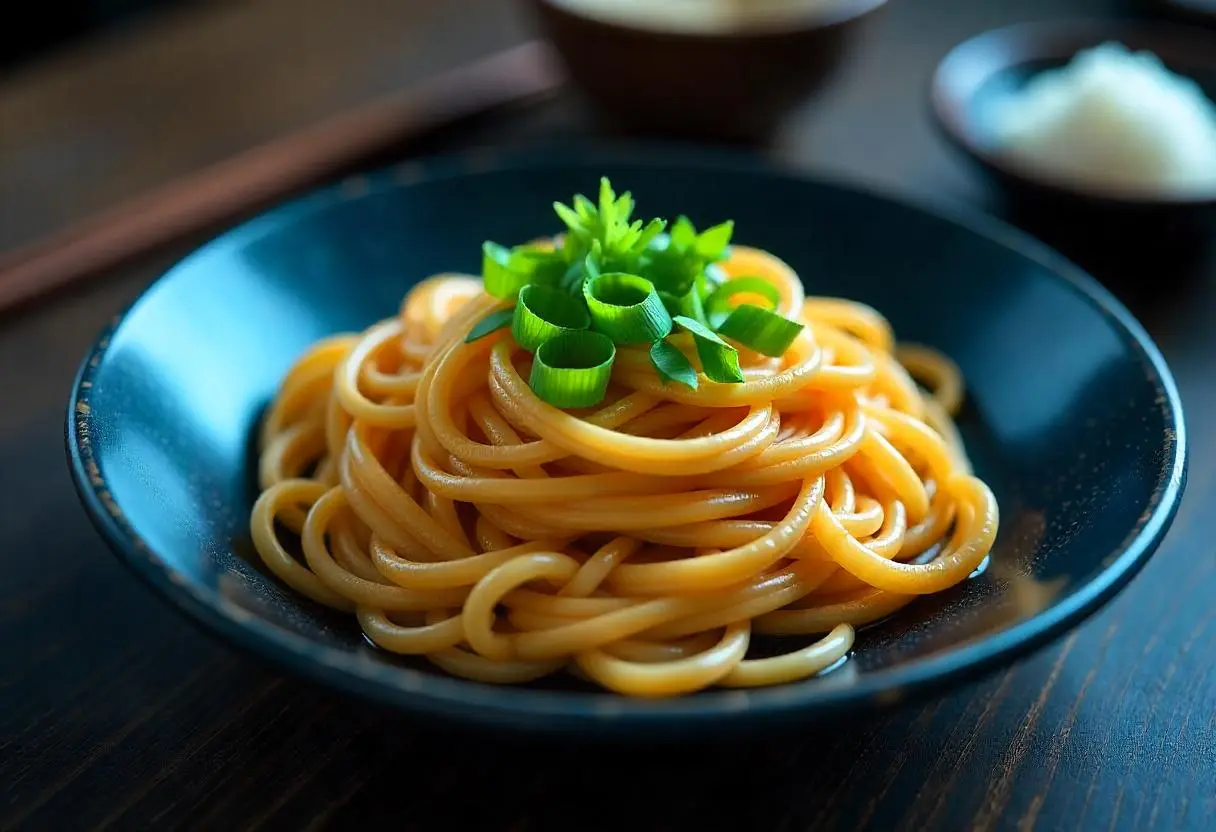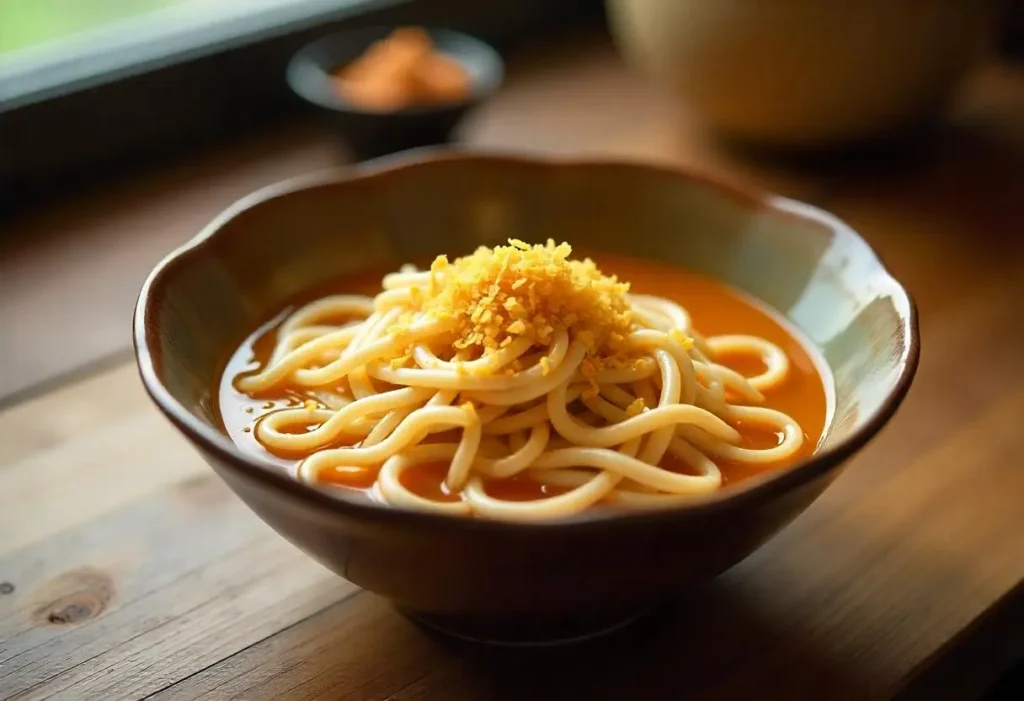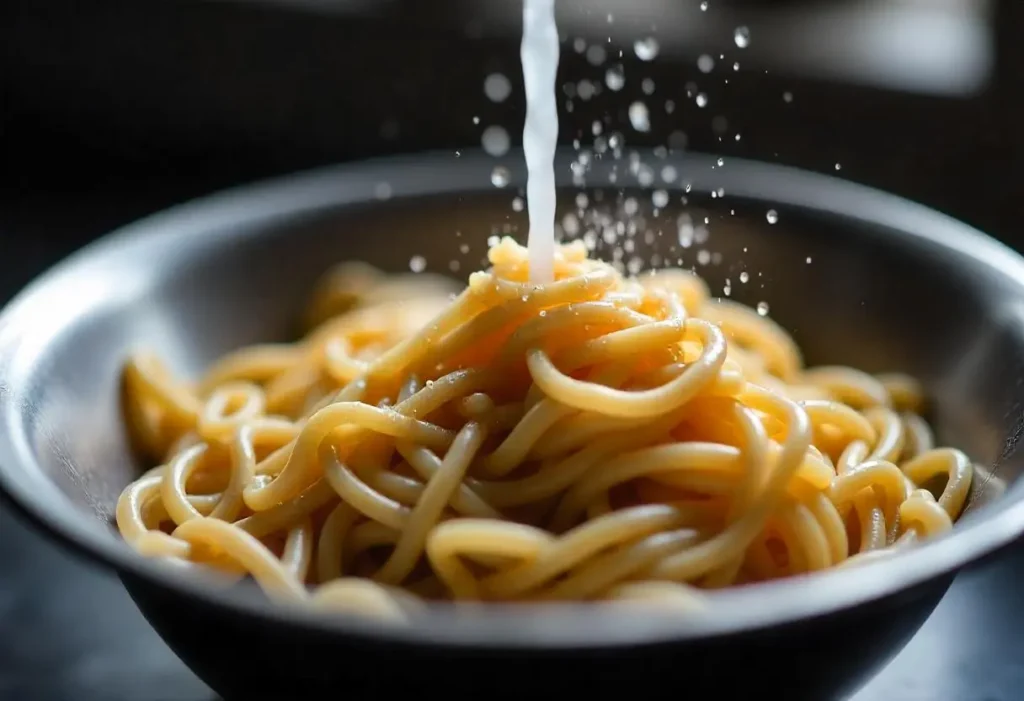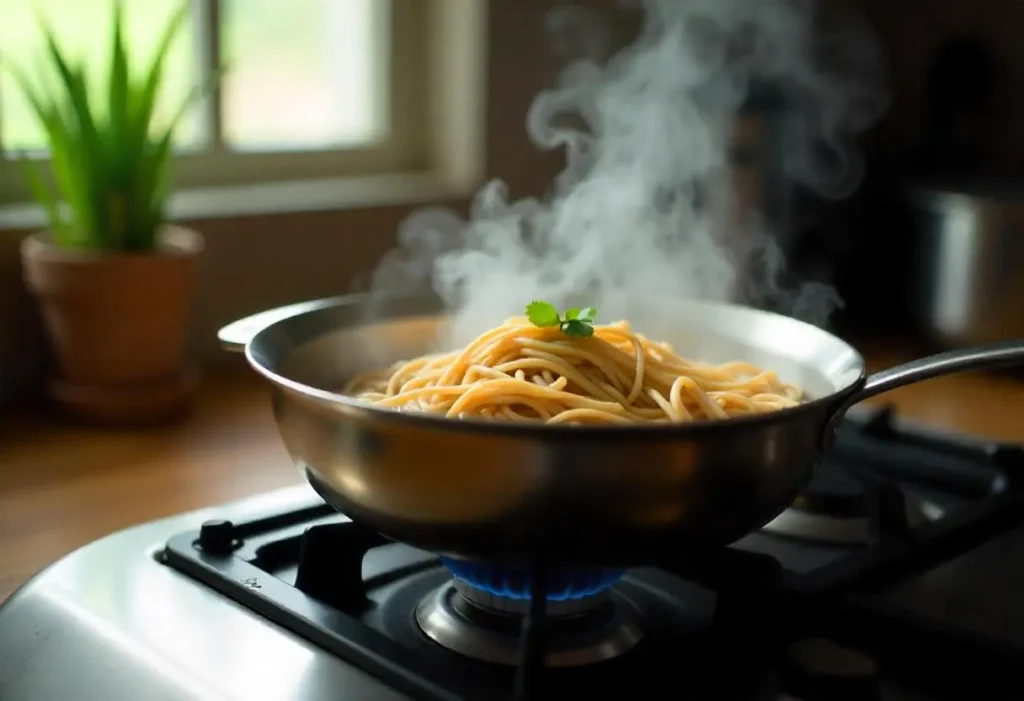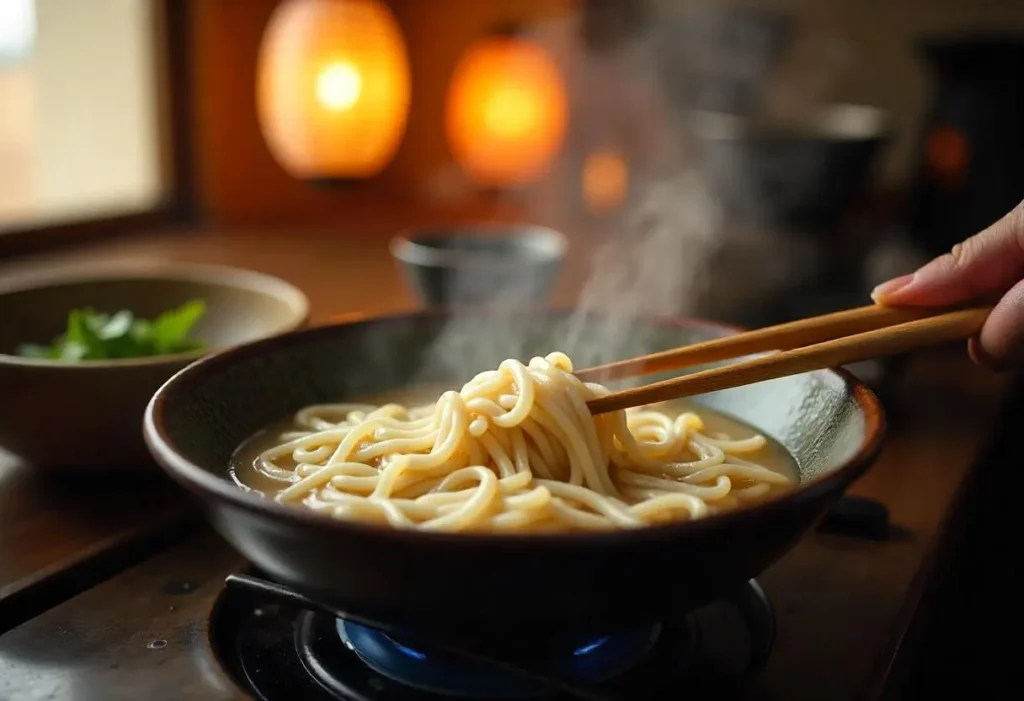Soba noodles are a delicious and healthy choice for any meal. These thin Japanese noodles, made from buckwheat flour, have a unique nutty flavor and a chewy texture. Whether you’re new to soba or a longtime fan, this guide covers everything you need to know about soba noodles, their health benefits, how to cook them, and tasty recipes to try. Let’s dive in!

What Are Soba Noodles?
Soba noodles are thin, brown noodles made from buckwheat flour, a gluten-free seed with a rich, earthy taste. The word “soba” means buckwheat in Japanese. Some soba noodles mix buckwheat with wheat flour for better texture, but 100% buckwheat soba (called juwari soba) is gluten-free and has a stronger nutty flavor. They’re a staple in Japanese cuisine, served hot in broth or chilled with dipping sauce.
- Origin: Soba noodles trace back to China around 5000 BC but became popular in Japan during the 16th century.
- Appearance: Light to dark tan, about 7-8 inches long, thin and flat.
- Flavor: Nutty, earthy, and slightly sweet.
- Versatility: Enjoy them in soups, stir-fries, salads, or cold with dipping sauce.
For more on traditional ingredients and preparation about Japanese Food.
Are Soba Noodles Healthy?
Yes, soba noodles are a nutritious choice! Buckwheat is packed with protein, fiber, and essential nutrients, making soba a great alternative to traditional pasta. Here’s why they’re good for you:
- High in Protein: A 2-ounce serving of 100% buckwheat soba has about 6-8 grams of protein, including all nine essential amino acids.
- Gluten-Free Option: Pure buckwheat soba is naturally gluten-free, ideal for those with celiac disease or gluten sensitivity. Always check labels, as some brands add wheat flour.
- Rich in Nutrients: Buckwheat provides iron (9% of daily needs), magnesium, and antioxidants that support heart health and reduce inflammation.
- Low in Fat: Less than 1 gram of fat per serving, making soba a heart-healthy choice.
- Supports Digestion: High fiber content promotes healthy digestion and keeps you full longer.
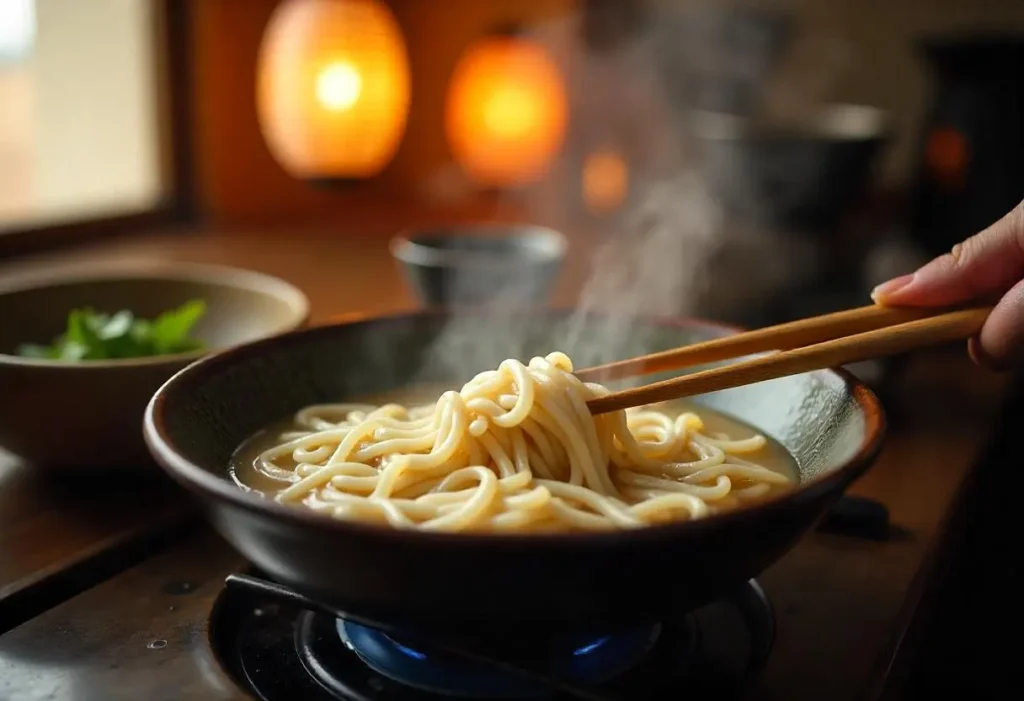
How to Cook Soba Noodles Perfectly
Cooking soba noodles is easy if you follow a few key steps to avoid gummy or sticky results. Here’s a simple guide:
- Boil Water: Bring a large pot of unsalted water to a boil. Salt can make 100% buckwheat noodles fragile.
- Add Noodles: Drop in soba noodles and stir gently to prevent sticking.
- Cook Al Dente: Boil for 3-7 minutes, depending on the brand. Check the package for exact times. They should be tender but firm.
- Rinse Immediately: Drain noodles in a colander and rinse under cold running water to remove excess starch. This keeps them from clumping.
- Serve Hot or Cold: Use in hot broth or chill for a dipping sauce dish.
Pro Tip: Save the cooking water (sobayu) to add nutrients to broths or sauces.
Delicious Soba Noodle Recipes to Try
Soba noodles are versatile and pair well with many flavors. Here are two easy recipes to get you started:
Chilled Soba Noodle Salad
This refreshing dish is perfect for warm days.
Ingredients (serves 2):
8 oz soba noodles
1 cup sliced cucumber
1 cup shredded carrots
2 tbsp toasted sesame seeds
2 tbsp soy sauce
1 tbsp sesame oil
1 tbsp rice vinegar
1 tsp maple syrup
1 tsp grated ginger
Instructions:
Cook soba noodles as directed above. Rinse and chill in cold water.
Mix soy sauce, sesame oil, rice vinegar, maple syrup, and ginger for the dressing.
Toss noodles with cucumber, carrots, and dressing.
Sprinkle with sesame seeds and serve cold.
Internal link suggestion: Link to a recipe page for “A step-by-step photo collage showing soba noodles boiling, rinsing, and being served.
” for more flavor ideas.
Hot Soba Noodle Soup
A cozy, umami-rich dish for cooler days.
Ingredients (serves 2):
8 oz soba noodles
4 cups dashi broth
2 tbsp soy sauce
1 tbsp mirin
1 cup sliced shiitake mushrooms
2 green onions, chopped
Optional: Fried tofu or tempura
Instructions:
Cook soba noodles and rinse lightly.
Heat dashi broth with soy sauce and mirin in a pot.
Add mushrooms and simmer for 5 minutes.
Divide noodles into bowls, pour hot broth over them, and top with green onions and tofu or tempura.
External link suggestion: Link to a Japanese culture site for authentic dashi broth recipes.
Image suggestion: A photo of a steaming bowl of soba noodle soup with colorful toppings.
Common Questions About Soba Noodles
Here are answers to popular questions from Google’s “People Also Ask” section:
Are soba noodles healthier than regular pasta?
Soba noodles, especially 100% buckwheat, are higher in protein and fiber than white pasta. They’re also gluten-free and lower in calories, making them a great choice for health-conscious eaters.
Can soba noodles be gluten-free?
Yes, 100% buckwheat soba (juwari soba) is gluten-free. Check labels, as some brands mix in wheat flour.
How do you store soba noodles?
Store unopened dry soba in a cool, dry pantry for up to a year. After opening, keep in an airtight container and use within a week. Freeze for up to two months to extend shelf life.
Manual schema suggestion: Add an FAQ schema with these questions and answers for better search visibility.
Why Choose Soba Noodles?
Soba noodles offer a unique combination of flavor, texture, and health benefits. Their nutty taste adds depth to dishes, while their nutrient-packed buckwheat base supports a balanced diet. Whether you’re gluten-free, vegan, or just looking for a new pasta alternative, soba noodles are a versatile and delicious option. Plus, they’re quick to cook and work in both simple weeknight meals and fancy dishes.
Image suggestion: A photo of soba noodles in various dishes (salad, soup, stir-fry) to show versatility.
Tips for Buying Soba Noodles
Check Ingredients: Look for 100% buckwheat for gluten-free diets or a buckwheat-wheat blend for sturdier noodles.
Choose Quality Brands: Brands like Eden Organic or Shirakiku offer high buckwheat content for authentic flavor.
Read Reviews: Check customer feedback for texture and taste to find the best soba for your needs.
External link suggestion: Link to a trusted retailer like Eden Foods for purchasing soba noodles.
Final Thoughts
Soba noodles are a tasty, healthy, and versatile addition to any kitchen. Their nutty flavor and chewy texture make them perfect for salads, soups, or stir-fries. With high protein, fiber, and gluten-free options, they’re a smart choice for anyone looking to eat better without sacrificing flavor. Try the recipes above or experiment with your own creations to enjoy soba noodles at home!
Internal link suggestion: Link to a page on “Healthy Asian Recipes” for more inspiration.
Call to action: Have you tried soba noodles? Share your favorite recipe in the comments or explore more healthy meal ideas on our site!

